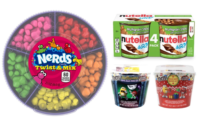Like many industry events this year, the show normally referred to as PACK EXPO International was held virtually.
Dubbed PACK EXPO Connects, the event brought the industry together during its launch week Nov. 9-13, with nearly 18,000 attendees engaging with more than 700 exhibitors to find solutions to critical packaging challenges.
However, like many newly virtual conferences, there were some unexpected issues.
Despite exhibitor preparedness, technical issues kept the live demonstrations from launching as intended on Monday. It was nothing they couldn’t overcome, though. PACK EXPO Connects exhibitors adapted and demos returned for attendees looking to see technology in action the remainder of the virtual conference.
“This event was able to connect the industry, which was our No. 1 goal in a year when professionals cannot attend physical trade events,” said Jim Pittas, president and CEO, PMMI. “And our exhibitors were remarkable in their ability to react and deliver effective demonstrations despite the technical challenges entirely outside of their control.”
Traditionally held every other year, the next PACK EXPO International is slated to be held in Chicago, Oct. 23-26, 2022. As the vaccines get closer to mass distribution, there’s little doubt that the world will be back to in-person events by then. However, it seems safe to say that nothing will ever go back to exactly the way it was before the pandemic. Maybe, though, that’s not such a bad thing.
Like many industries, packaging has been forced to evolve over the last year in ways nobody expected. However, many of those evolutions were coming eventually, and they present a plethora of new opportunities for the companies that capitalize on them.
2020 leaves it mark financially
So how is the packaging machinery sector doing in general? Jorge Izquierdo, v.p. of market development for PMMI, says that while sales were up in 2019, the past year has been tumultuous.
Specifically, he said that packaging machinery saw about 3.6 percent growth in 2019. And for the first few months of 2020, things were looking good. Then COVID-19 hit.
“What we saw at first was a significant reduction in business activity. New equipment slowed down significantly in March and April,” he explained. “March, April, May we were very concerned. We were thinking it would shrink close to 10 percent.”
However, the slump actually lifted by late spring, and May, June, July and August actually saw sales go up.
So while they originally predicted that 2020 would see a 10 percent decrease in sales due to COVID-19, they now think that it won’t shrink more than 2 percent. Still a drop, but not nearly as bad as they once feared.
“We don’t want to be too optimistic, but we may be even with last year,” Izquierdo said cautiously.
Remote repairs gain popularity
Of course, sales weren’t the only thing affected by COVID-19.
In the beginning of the pandemic, one of the most immediate impacts was the social distancing restrictions and what that meant for service technicians. By April, about 70 percent of service technicians were being denied entry into plants.
“Everybody jumped in to solve the problem. Between April and today, there has been a significant increase in remote access technology,” Izquierdo said.
How that looks in practice can vary. Sometimes, it’s literally a technician connecting with an operator via a video call and then walking through solutions. Sometimes, it’s a technician remotely accessing the equipment — something that many manufacturers had been reluctant to allow before COVID-19 because of cyber security concerns.
“There was a significant reluctance to grant that access. Now, the importance to get that remote access was very, very [apparent]. So the IT and OT departments found a way to grant access to the suppliers of the equipment.”
And Izquierdo predicts that it will be one of the changes to the sector that will remain after the pandemic.
When technicians had to be on site, they have found ways to make it happen. Sometimes driving 12 hours to avoid crowded planes and quarantining when they arrived if needed.
Going forward, companies are requiring remote access options on any new equipment, something that could have been seen as an afterthought before.
Pandemic highlights need for flexibility
The equipment needs of manufacturers also shifted in 2020 as consumer behavior changed.
“Traditionally the drivers for consumers have been a lot of innovation, a lot of health and wellness, and sustainability. These days the drivers are basically availability and convenience,” Izquierdo said. “You buy what you can find. And you try to go to one single super market.”
While he does predict that things like sustainability will become more important again after the pandemic, for now, companies are still adapting to the current shopping environment.
For example, historically, manufacturers have valued the ability to expand their packaging lines for new products. But as consumer behavior shifted, the ability to convert packaging lines to products that were in high demand and eCommerce products suddenly became the priority.
Consumers were looking for staples, and a lot of food and beverages were selling out. Which meant manufacturers needed to be able to shift existing lines to different products to meet demand.
They also were shopping online more, creating a need for secondary packaging that can be shipped directly to consumers’ homes. While products headed for traditional retail stores are normally shipped on pallets, with eCommerce, manufacturers can’t rely on the pallet to protect the product.
“With direct-to-consumer, you’re looking for packaging that’s lightweight, but still durable enough,” Izquierdo said.
In all, there’s a lot of fast-paced evolution happening in packaging, and the manufacturers that are able to adapt will no doubt find a lot of new opportunities as well.
For those looking for more insight into the changes the sector has seen in 2020, there’s still time. On-demand demos and exhibitor showrooms available through March 2021 at packexpoconnects.com.





